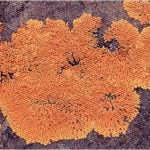Contents
Introduction
Autotrophic nutrition is a type of nutrition in which organisms produce their own food through the process of photosynthesis or chemosynthesis. It is a self-sustaining mode of life, as the organisms don’t have to rely on external sources of food.
Types of Autotrophic Nutrition
Photosynthesis:
Photosynthesis is the process by which green plants produce food by converting light energy into chemical energy. Chlorophyll, the green pigment in plants, absorbs light energy and converts it into food in the form of glucose.
Chemosynthesis:
Chemosynthesis is a process in which organisms produce food through the oxidation of inorganic substances. This process occurs in the absence of light and is found in organisms such as bacteria that live in extreme environments such as deep-sea vents.
Benefits of Autotrophic Nutrition
Self-Sustenance:
Autotrophic organisms can produce their own food, making them self-sufficient. They don’t have to rely on external sources of food, and thus can survive in environments where other organisms might not be able to.
Food Supply:
Autotrophic organisms form the base of the food chain and provide food for other organisms. For example, green plants are the primary source of food for herbivores, and herbivores provide food for carnivores.
Oxygen Production:
Photosynthesis produces oxygen as a by-product, making it available for other organisms to breathe. The oxygen produced by photosynthesis has been crucial in the evolution of life on Earth.
Conclusion
Autotrophic nutrition is a vital mode of life that sustains many organisms and provides the foundation for the food chain. Whether through photosynthesis or chemosynthesis, autotrophic organisms have the ability to produce their own food, making them self-sufficient and contributing to the balance of life on Earth.




